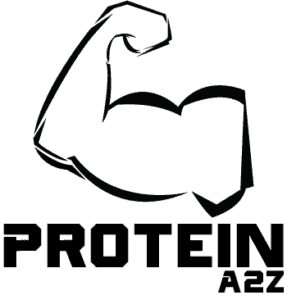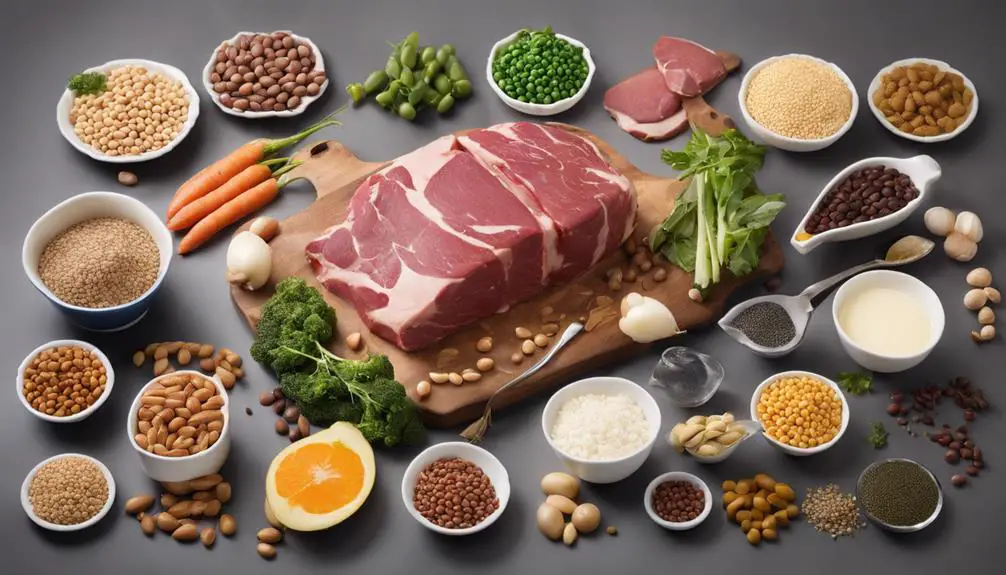Offering insights on what 200g of protein entails, discover surprising sources and quantities that can help you optimize your daily
If you're wondering what 200g of protein looks like, you can achieve it through a variety of sources. For example, a 200g serving of chicken breast provides 50g of protein, while lentils offer 18g of protein in the same amount. Greek yogurt or cottage cheese can contribute around 25g of protein per serving, and incorporating egg whites can boost your intake by 50g in a 450g serving. Including a mix of these protein-rich foods into your diet can help you reach your daily protein goals effectively.
Table of Contents
Key Takeaways
- Consuming 200g of chicken breast provides 50g of protein, meeting a significant portion of daily protein needs.
- Greek yogurt in a 200g serving offers 20-30g of protein, aiding in reaching high protein intake goals.
- 200g of lentils supplies 18g of protein, ideal for plant-based protein intake.
- Egg whites in a 200g portion deliver 50g of protein, perfect for high-protein meal options.
- Cottage cheese in a 200g serving contains 25g of protein, assisting in meeting protein requirements effectively.
Protein Content in Different Foods
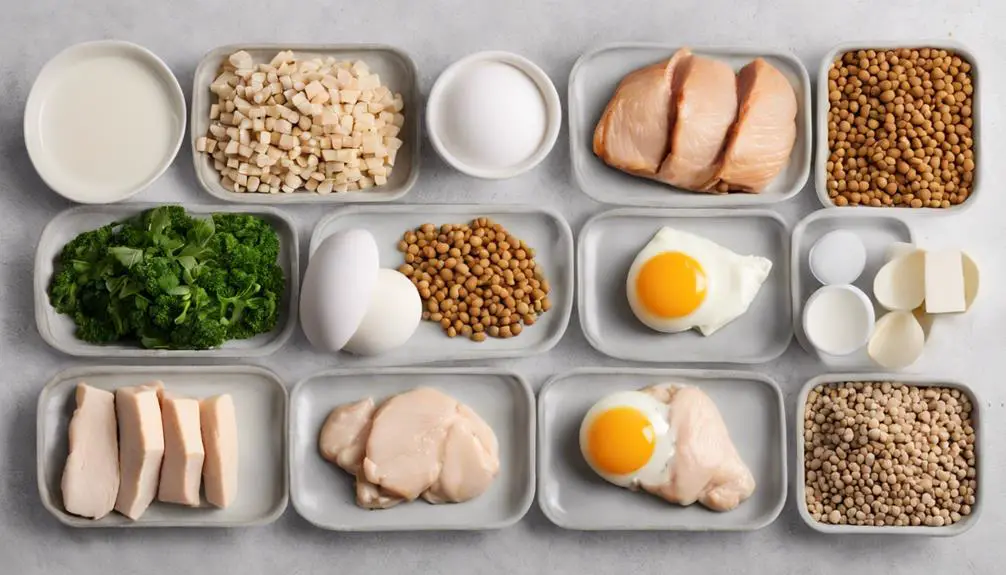
When looking at the protein content in different foods, you can easily see the variety of options available to meet your daily protein needs. For instance, a 6-ounce chicken breast is a powerhouse, boasting around 50 grams of protein. This makes it a substantial choice for those aiming to increase their protein intake.
Additionally, 6 large eggs provide approximately 36 grams of protein, making them a significant contributor to your daily protein requirements. If you prefer plant-based options, 1 cup of cooked lentils offers about 18 grams of protein, giving you a nutritious alternative.
Incorporating protein-rich foods like Greek yogurt into your diet can be beneficial, as 1 cup contains roughly 20 grams of protein, making it an excellent snack or meal addition. Even 1 cup of cooked quinoa offers around 8 grams of protein, adding to the overall protein content of your meal.
Chicken Breast Protein Comparison
Eating chicken breast as a protein source can offer you a significant amount of protein per serving.
When comparing chicken breast protein content with other foods, it's essential to take into account both the quantity and quality of protein you're consuming.
Understanding the protein content and quality of chicken breast can help you make informed choices to meet your daily protein needs efficiently.
Chicken Breast Protein Content
For those seeking a high-protein dietary option, cooked chicken breast stands out as a protein-dense choice, offering approximately 50g of protein in a 200g serving. Here's why chicken breast is a great protein source:
- Protein Density: With around 25g of protein in just 100g of cooked chicken breast, it showcases the high protein content in this lean meat.
- Low in Fat: Chicken breast is a popular choice for those looking to increase protein intake while keeping fat content to a minimum.
- Meal Planning Aid: Understanding the protein content in chicken breast can assist in meal planning for individuals focusing on muscle growth or weight loss goals.
Including chicken breast in your meals can significantly help you reach your daily protein targets, especially if you aim for a 200g protein intake.
Protein per Serving
Comparing protein content among various food options, cooked chicken breast stands out as a protein-dense choice, offering approximately 50g of protein in a 200g serving. For muscle building, this makes chicken breast an excellent protein source.
A 6 oz chicken breast alone provides around 50g of protein, making it easier to reach daily protein goals. Grilled, baked, or roasted chicken breast can be versatile options to incorporate into your meals for muscle recovery and growth.
Understanding the protein content in foods like chicken breast is essential for those focusing on muscle building. Including chicken breast in your diet can support your muscle-building efforts, making it a valuable addition to your meal plan.
Protein Quality Comparison
When considering protein quality comparison, one can rely on the lean and high-quality protein content provided by 160g of cooked chicken breast, making it a favorable option for various dietary goals.
Here are three reasons why chicken breast stands out among protein sources and high-protein foods:
- Lean Protein Content: With 50g of protein in 160g of cooked chicken breast, it offers a substantial amount of protein while being low in fat.
- Weight Loss Support: Chicken breast's high protein content and low fat make it a popular choice for weight loss diets.
- Muscle Growth and Repair: Including chicken breast in meals ensures a quality protein source that supports muscle growth and repair, making it beneficial for fitness enthusiasts.
Greek Yogurt Protein Quantity
When aiming to boost your protein intake efficiently, incorporating plain Greek yogurt into your meals can be a convenient and nutritious option due to its protein-rich content. A typical 8-ounce serving of Greek yogurt contains about 10-15 grams of protein. Opting for plain Greek yogurt over flavored varieties is beneficial as it minimizes added sugars and maximizes protein content. Greek yogurt is a versatile ingredient that can be used in smoothies, parfaits, dips, and as a topping, making it easy to include in your daily meals. Below is a breakdown of the protein quantity in Greek yogurt:
| Greek Yogurt Protein Quantity | Portion Size | Protein Content |
|---|---|---|
| Plain Greek Yogurt | 8 ounces | 10-15 grams |
Incorporating Greek yogurt into your diet not only helps in meeting daily protein intake goals but also provides essential nutrients like calcium and probiotics. Enjoy the benefits of this protein-packed dairy product in various forms to support your overall health and wellness.
Cottage Cheese Protein Amount
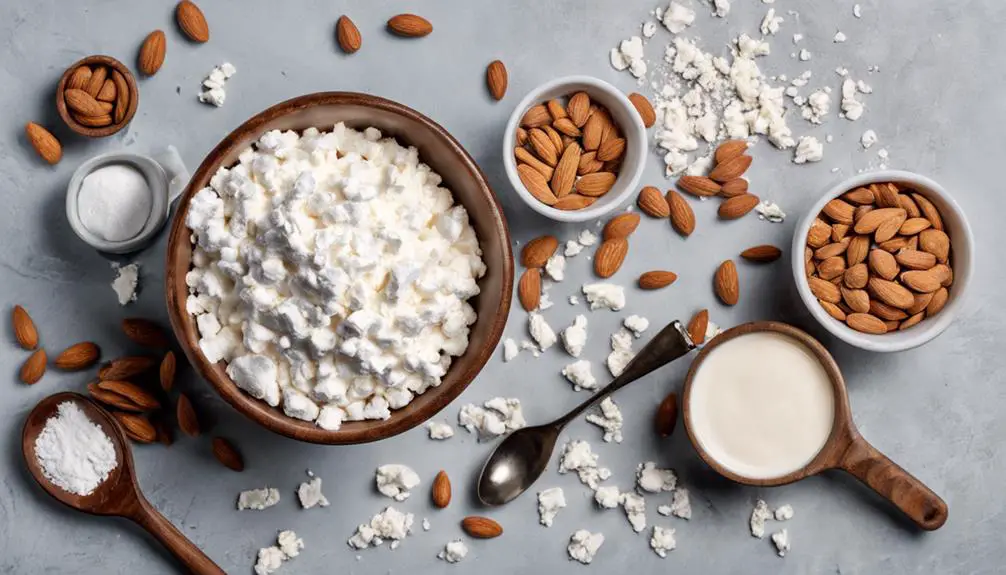
To maximize your protein intake efficiently, consider including cottage cheese in your meals due to its high protein content, with a typical 1-cup serving containing around 25 grams of protein. Here are three reasons why cottage cheese can be a beneficial addition to your diet:
- High Protein Content: Cottage cheese is a rich source of protein, making it a valuable component of a protein-rich meal plan. Consuming cottage cheese can help you meet your daily protein requirements effectively.
- Versatility in Meals: Cottage cheese is a versatile ingredient that can be incorporated into various dishes. You can enjoy it with fruits for a sweet twist, nuts for added crunch, or savory toppings for a more filling meal. This adaptability makes cottage cheese a convenient option for increasing your protein intake.
- Convenient and Tasty: Cottage cheese offers a convenient and delicious way to boost your protein consumption. Whether enjoyed on its own or as part of a recipe, cottage cheese can elevate the protein content of your meals while satisfying your taste buds.
Lentils Protein Comparison
Comparatively, 200g of lentils provides approximately 18g of protein, offering a plant-based source rich in essential amino acids for your dietary needs. Lentils are a nutritional powerhouse, packing a protein punch that can be a valuable addition to your meals.
A single cup of cooked lentils serves up around 18g of protein, making it a convenient and efficient way to boost your protein intake. Whether you enjoy them in soups, salads, stews, or even as a meat substitute in various dishes, lentils are a versatile ingredient that can easily be incorporated into your diet.
Given that lentils are plant-based, they aren't only a good source of protein but also offer a range of essential nutrients. Including lentils in your meals can help you meet your daily protein goals while providing fiber, vitamins, and minerals. So, next time you're looking to up your protein intake, consider adding lentils to your menu for a nutritious and satisfying option.
Eggs Protein Quantity
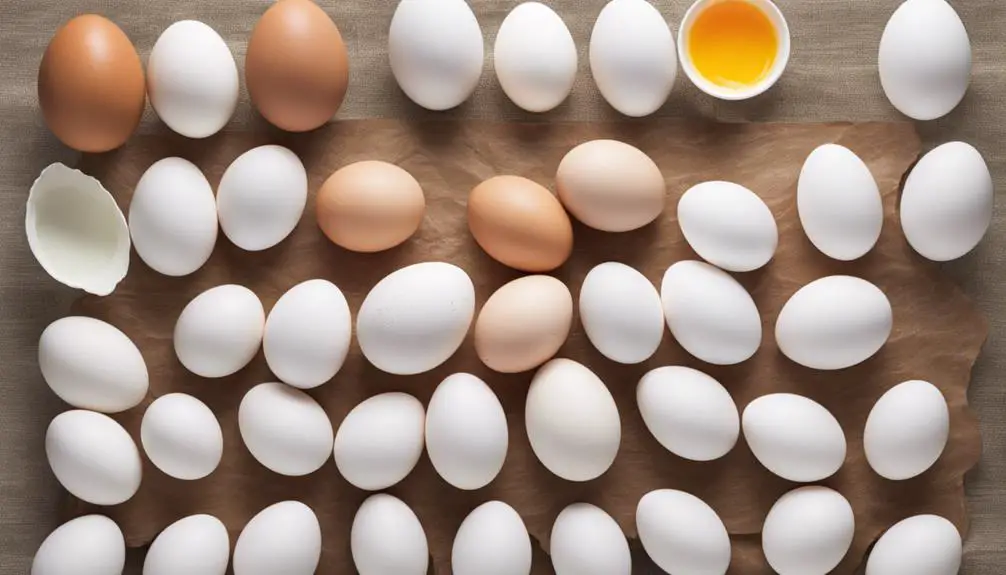
Eggs are a powerhouse of protein, with egg whites containing approximately 11g of protein per 100g. A single large egg typically offers about 6-7g of protein, making them a convenient and versatile protein source.
Including eggs in your diet can be a practical way to boost your protein intake and support your overall nutrition goals.
Egg Protein Content
When aiming to enhance your protein intake, considering the protein content in egg whites can be particularly beneficial due to their high concentration of this essential nutrient.
Egg Protein Content Facts:
- 450g of egg whites contain approximately 50g of protein, making them a high-protein option.
- 110g of egg whites is equivalent to less than four whole eggs in regards to protein content.
- Egg whites are a convenient and versatile source of protein for various dishes.
Understanding the protein content in egg whites can assist you in reaching your protein intake goals efficiently. Incorporating egg whites into your meals can be a simple way to increase your daily protein consumption and work towards a healthier diet.
Protein in Egg Whites
To gauge the protein content in egg whites accurately, consider that 450g of egg whites provides approximately 50g of protein, making them a notable high-protein option.
When meal planning, keep in mind that 110g of egg whites offer less protein than four whole large eggs.
Egg whites are a convenient and versatile protein source suitable for various meals. Understanding the protein content in egg whites can assist you in reaching your daily protein goals effectively.
Benefits of Egg Protein
Considering your protein intake goals, understanding the benefits of egg protein can be enlightening. Here are three key advantages of incorporating egg protein into your diet:
- Egg protein is high-quality, providing essential amino acids that support muscle growth and repair.
- With each large egg containing 6-7 grams of protein, eggs offer a convenient and nutritious way to boost your protein intake.
- Consuming 4-5 egg whites, which are low in fat and calories, can deliver around 20-25 grams of protein, aiding in your muscle-building efforts.
Variety of Nutrients in Protein Sources
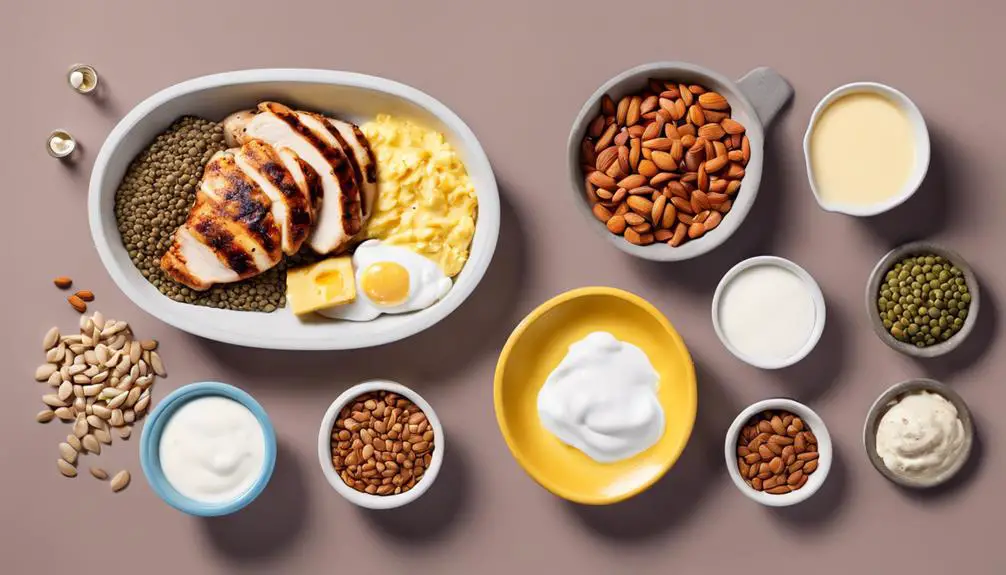
Protein sources such as chicken breast, tofu, and Greek yogurt offer a diverse range of essential nutrients important for overall health. When aiming for a high-protein diet, it's important to take into account the variety of nutrients different sources can provide.
Nuts and seeds, for example, not only offer protein but also healthy fats that support heart health. Beans and lentils aren't only protein powerhouses but also rich in fiber, vitamins, and minerals, adding a nutritional boost to your meals.
Dairy products like milk and cheese contribute not just protein but also calcium and other essential nutrients. By incorporating a mix of these protein sources into your meals, you secure a well-rounded intake of vitamins, minerals, and other crucial nutrients necessary for top health.
Building High Protein Meals
To build high-protein meals effectively, consider incorporating protein-rich foods like lean meats, fish, tofu, or legumes into your dishes.
Balancing your macronutrients by including a variety of vegetables, complex carbs, and healthy fats alongside your protein sources can help create well-rounded, satisfying meals that support your protein intake goals.
Experiment with different recipes, meal prep ideas, and protein sources to keep your high-protein meals interesting and delicious.
Protein-Rich Meal Ideas
For crafting high-protein meals, integrating a variety of protein sources like lean meats, fish, and plant-based alternatives can enhance your daily protein intake substantially.
Here are some protein-rich meal ideas to help you meet your daily goal of 200g:
- Scrambled eggs with spinach and feta cheese for breakfast.
- Grilled chicken salad with quinoa, chickpeas, and a lemon vinaigrette for lunch.
- Baked salmon with roasted vegetables and a side of quinoa for dinner.
Balancing Macros Effectively
When aiming to balance macros effectively in your meals, it's important to think about the proportions of protein, carbohydrates, and fats for ideal nutrition.
To meet your protein per day requirements, consider building meals around high-protein sources like lean meats, fish, eggs, dairy, and plant-based options such as lentils or tofu. Incorporating a variety of protein-rich foods not only helps you reach your daily protein goals but also enhances the diversity of your meals.
Best Breakfast Protein Options
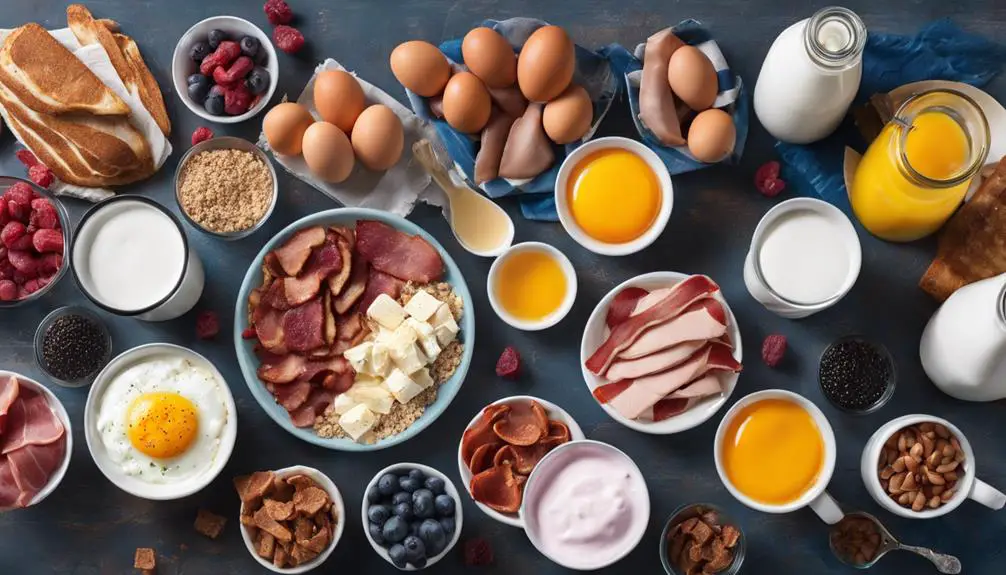
Consider starting your day with protein-packed breakfast options to kickstart your morning with energy and nourishment. Here are three delicious choices to boost your morning protein intake:
- Protein Smoothie: Blend together Greek yogurt, a scoop of protein powder, spinach, banana, and almond milk for a quick and convenient breakfast option that can provide a substantial amount of protein to start your day off right.
- Protein Pancakes: Whip up a batch of protein pancakes using eggs, protein powder, and a touch of cinnamon. Top them with some fresh berries and a drizzle of honey for a tasty and protein-rich breakfast treat.
- Veggie Omelet: Sautee your favorite vegetables like bell peppers, spinach, and mushrooms, then add in some diced chicken breast for an extra protein punch. Enjoy a flavorful and filling veggie omelet to kick off your day with a protein boost.
High Protein Lunch and Dinner Ideas
Start your high-protein lunch and dinner journey by exploring a variety of delicious and nutritious meal options that will help you meet your daily protein goals. For lunch, consider a grilled chicken salad with mixed greens, cherry tomatoes, and a vinaigrette dressing or a tofu stir-fry with colorful vegetables and a side of quinoa. These high-protein meals offer a mix of animal and plant-based protein sources to guarantee your protein intake.
When it comes to dinner, baked salmon seasoned with herbs and served with roasted vegetables or a lean beef dish like sirloin steak with sweet potato wedges and steamed broccoli are excellent options. Incorporating protein-rich ingredients such as lentils, chickpeas, and lean meats into your lunch and dinner meals can help you meet your daily protein intake targets.
Experimenting with different high-protein recipes won't only help you stay on track with your nutritional goals but also add variety and flavor to your meals.
Healthy Snacks With Protein
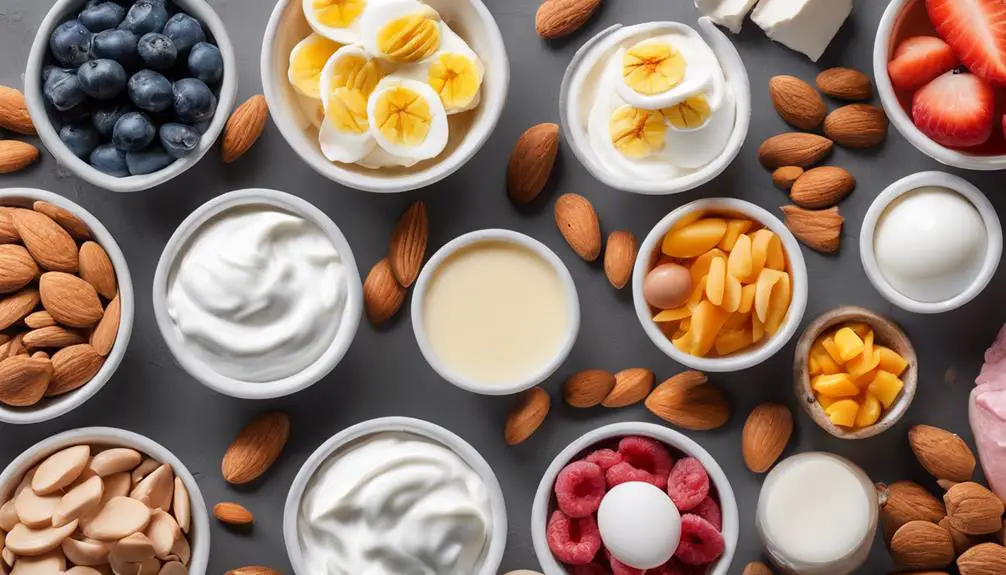
Boost your daily protein intake with these nutritious and delicious snack options packed with essential nutrients.
- Indulge in Greek yogurt topped with nuts and honey for a tasty snack providing around 15g of protein.
- Grab a hard-boiled egg paired with whole grain crackers as a convenient snack offering 6g of protein.
- Enjoy hummus with carrot sticks or whole grain pita for a flavorful snack with approximately 4g of protein.
These high protein snacks not only satisfy your cravings but also help you reach your daily protein goals. Whether you prefer something sweet like cottage cheese with sliced fruit or something savory like a protein bar, there are plenty of options to choose from.
Incorporating these protein-rich snacks into your daily routine can keep you feeling full and energized throughout the day. Experiment with different snack ideas to find what works best for your taste buds and lifestyle.
Frequently Asked Questions
How Can I Hit 200g of Protein a Day?
To hit 200g of protein daily, prioritize meals with high-protein sources like chicken, eggs, and yogurt. Incorporate protein shakes or bars, opt for plant-based or whey options. Experiment with protein-rich snacks, and balance meals with nuts, seeds, and lean meats for success.
What Would 200g of Protein Look Like?
To hit 200g of protein daily, focus on meals with sources like chicken breast, fish, eggs, and protein shakes. Mix animal and plant-based proteins such as tofu, lentils, and Greek yogurt. Careful planning and portion control are key.
What Does 100g of Protein in a Day Look Like?
To reach 100g of protein daily, focus on diverse sources like lean meats, fish, dairy, eggs, nuts, and beans. Portion sizes matter; for instance, 160g of cooked chicken breast offers about 50g of protein. Vary to meet your goals.
How Many Eggs Is 20 Grams of Protein?
To get 20 grams of protein, you can enjoy about 3 large eggs. Eggs are a simple and tasty way to boost your protein intake. Including eggs in your meals can help you meet your protein goals deliciously.
Conclusion
To sum up, 200g of protein can be achieved through a variety of foods such as:
- Chicken breast
- Greek yogurt
- Cottage cheese
- Lentils
By incorporating high protein meals into your breakfast, lunch, and dinner, as well as choosing protein-rich snacks, you can easily meet your daily protein needs.
Remember to balance your protein intake with other nutrients for a well-rounded diet that supports your overall health and fitness goals.
